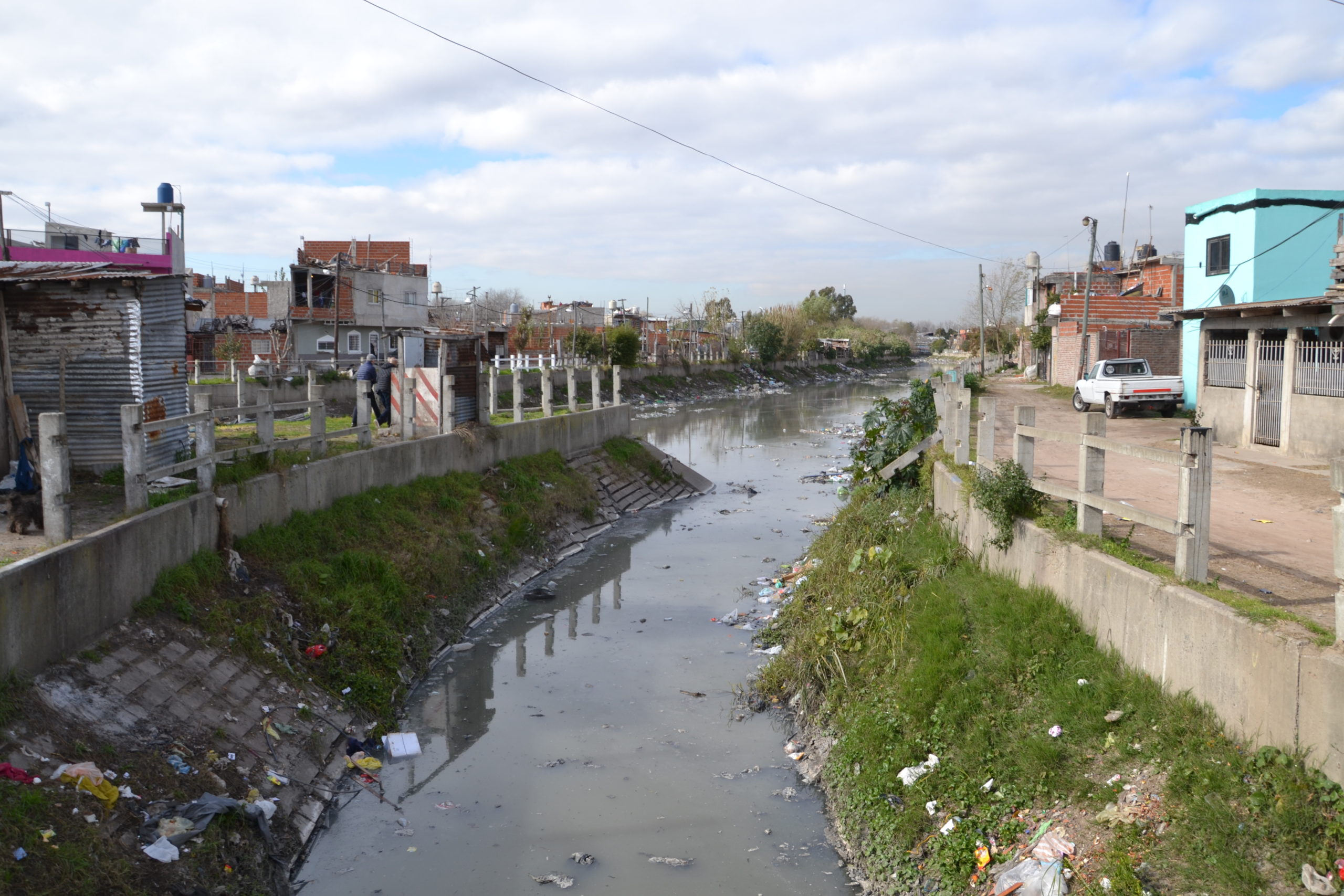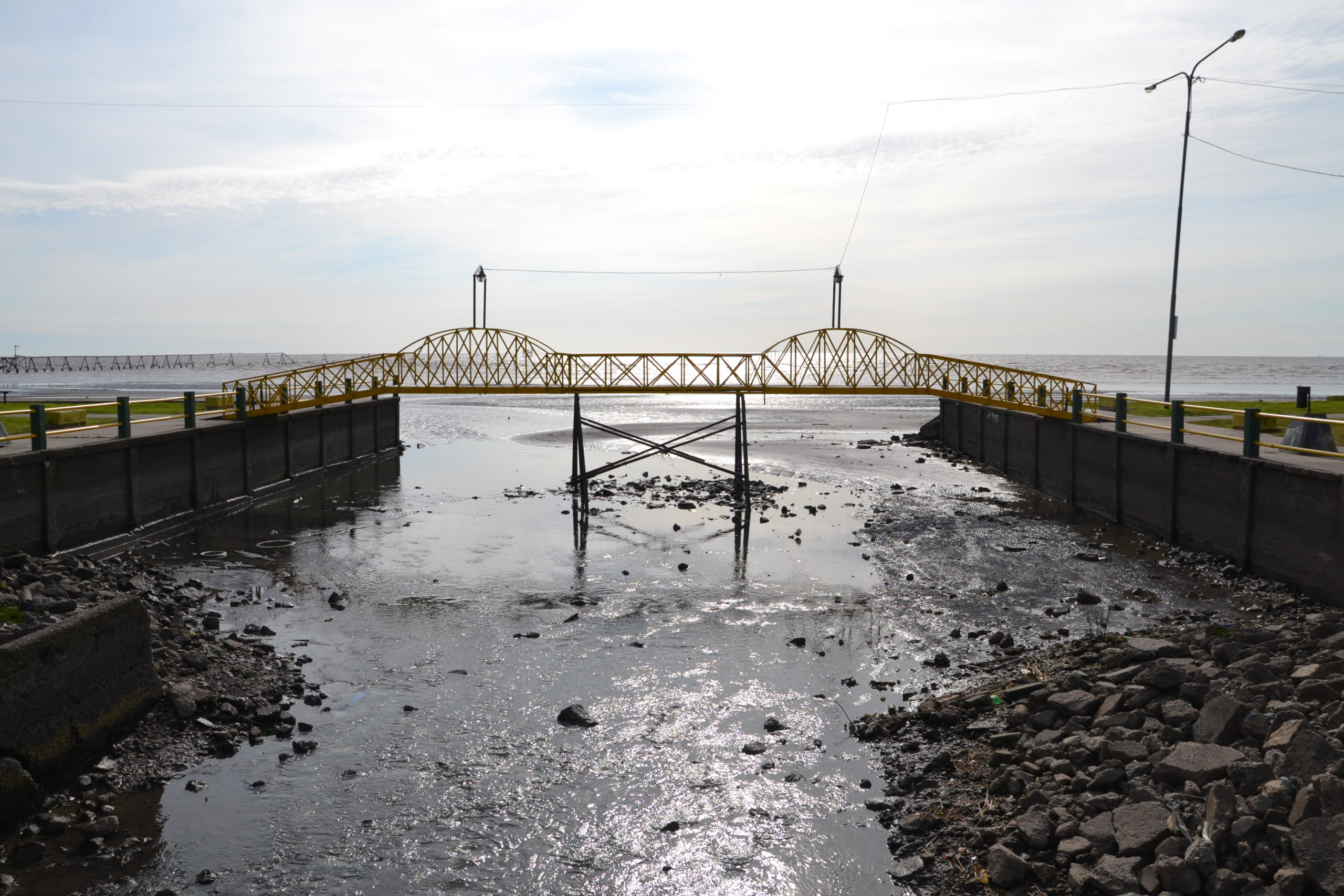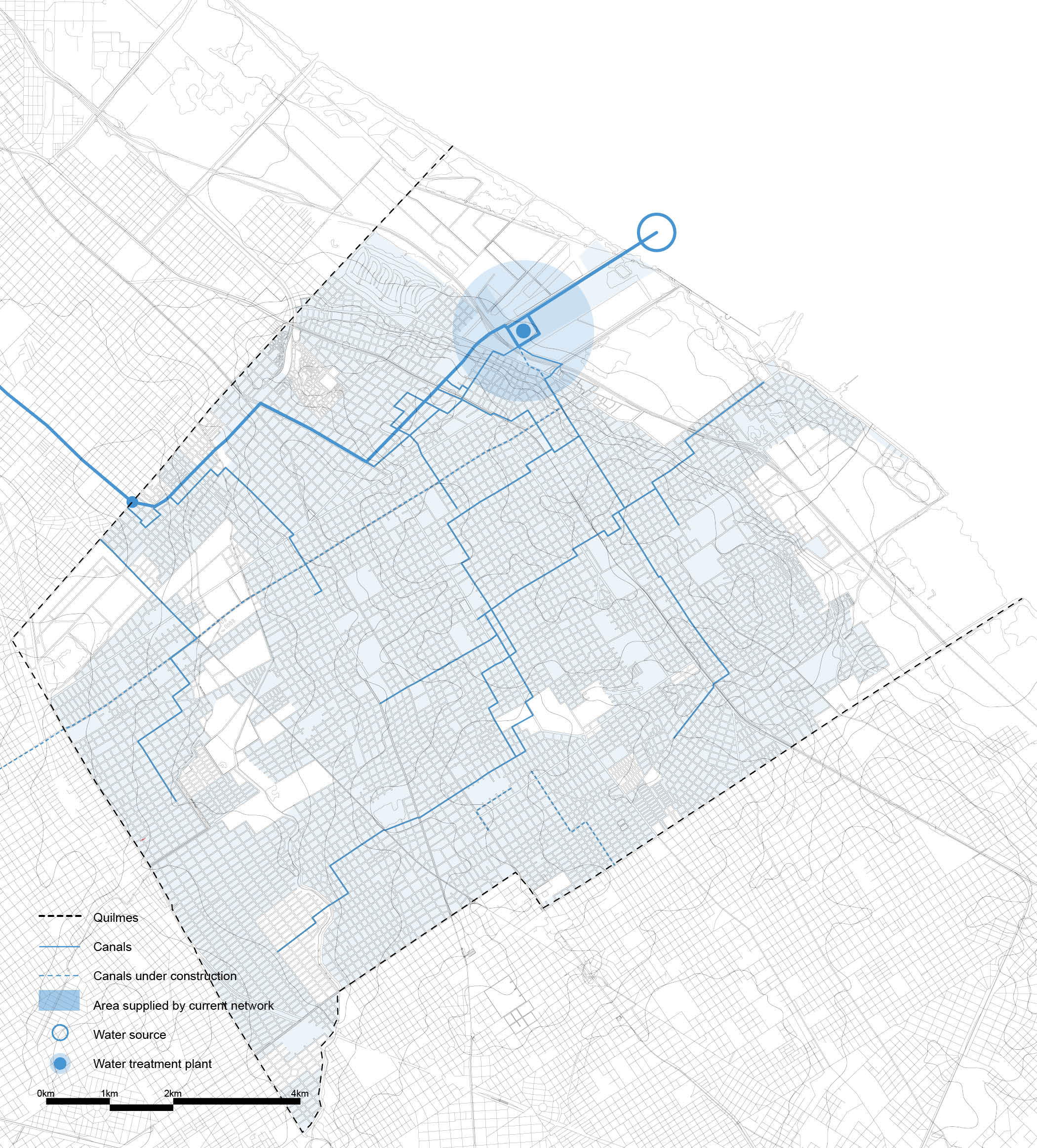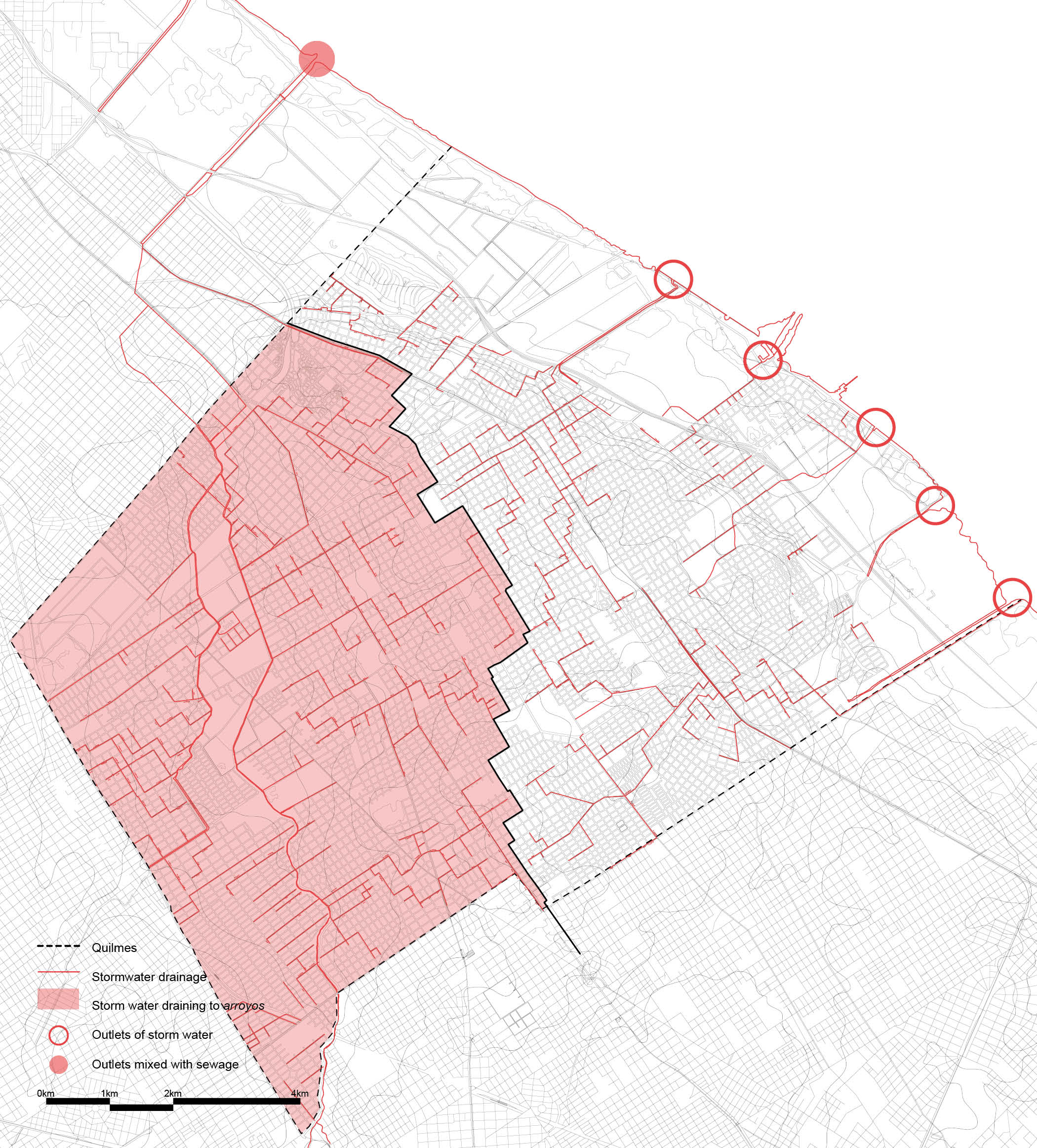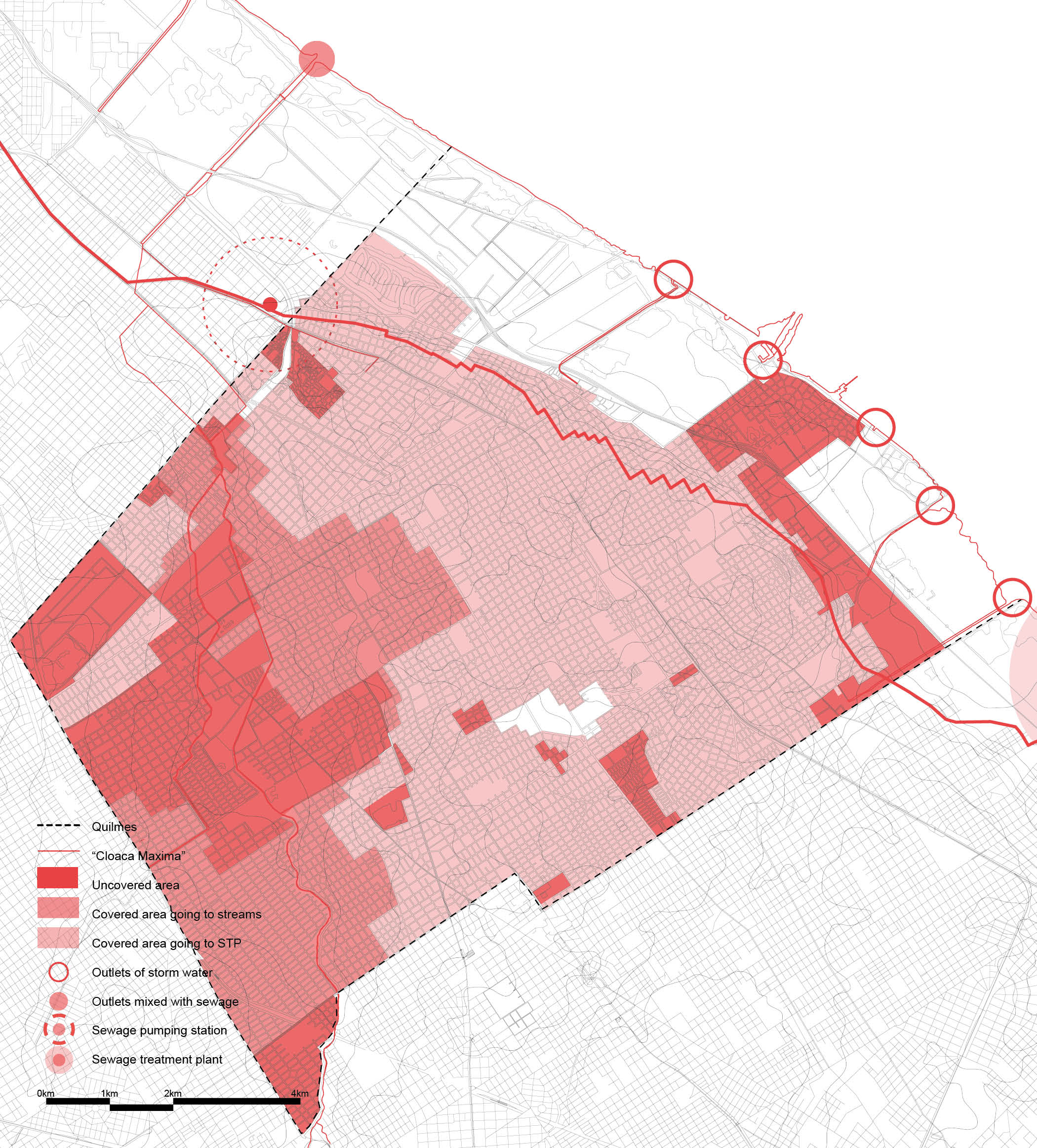HYDROLOGICAL SYSTEMS
Water, in the form of streams and rivers, has a main role in the morphology of the city of Quilmes. Despite this strong character of the hydraulic system, the city lives giving its back to water courses and converting them into sewers and undesired spaces.
There are two arroyos that crisscross the city from south to north and flow down to La Plata River, after entering in the neighbor city of Avellaneda. The streams have been channeled and covered in many cases and are severely polluted.
On the other hand, the riverside of La Plata River has a marshland character that has been disturbed over the years through the excavation of various artificial lagoons, which were excavated for the construction of the highway Buenos Aires – La Plata. The floodplain also shows high levels of pollution and is being modified in the neighborhood of ‘La Ribera’, where informal settlements are rapidly growing on top of floodable areas.
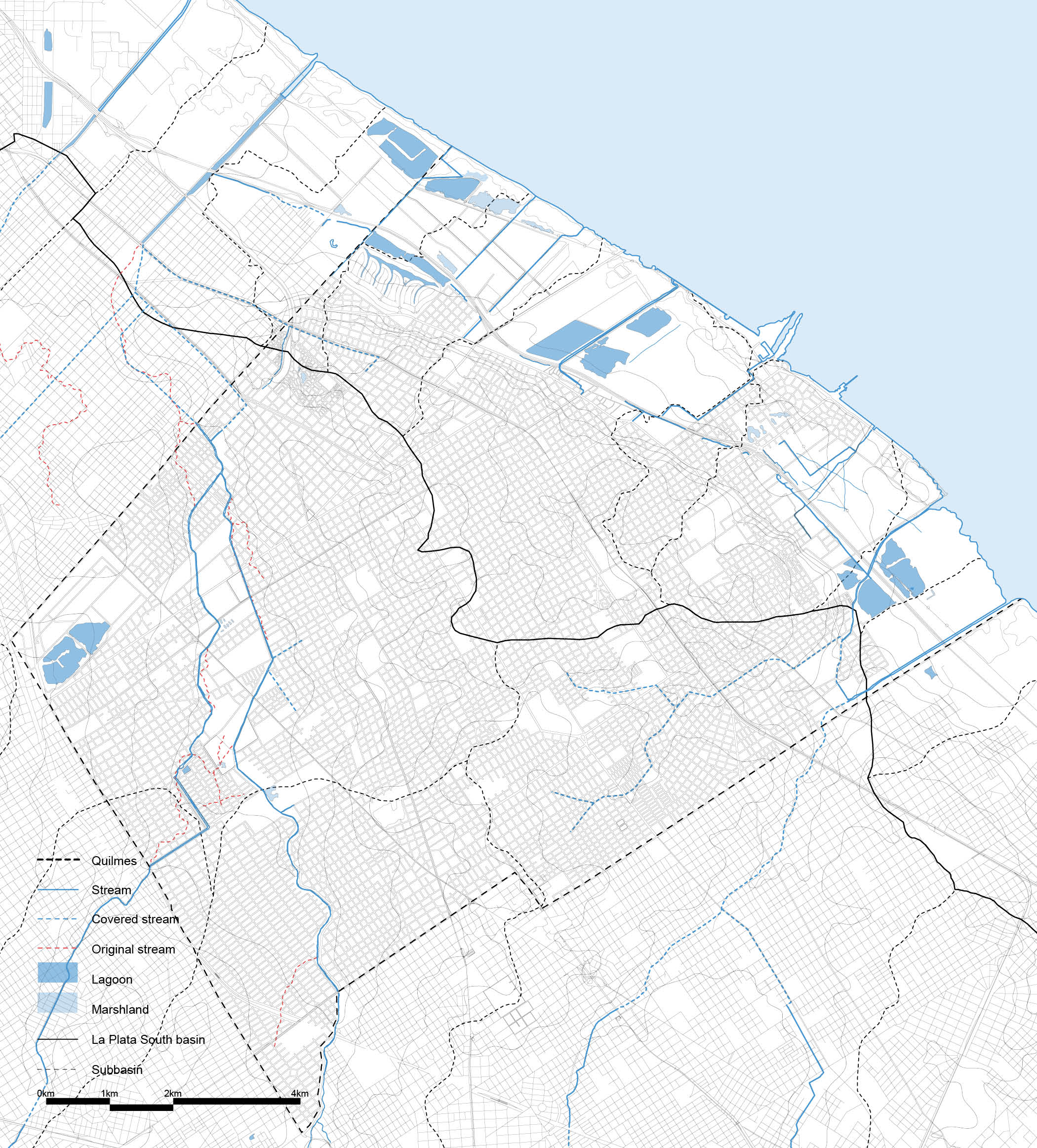
DRINKING WATER NETWORK
Drinking water is obtained from La Plata River and treated in General Belgrano treatment plant. The plant has a treatment capacity of 1,950,000 m³/d and takes most of the water to the city of Buenos Aires through a subterranean river. There is a second subterranean river under construction that will take water Southwest of the province. The plant is currently being extended.
STORM WATER DRAINAGE
Storm water is drained directly to La Plata River. The area in the subbasin of the arroyos is drained toghether with untreated sewage waters. This water goes later to La Plata untreated.
SEWAGE NETWORK
There are large areas that are not covered by the sewage network. Also, many areas are spilling untreated sewage directly into the streams, going later to La Plata River.
There is a Pumping station in Avellaneda with a capacity of 1,843,000 m³/d and a STP in Berazategui with a capacity of 2,894,000 m³/d. Another one is under construction in Avellaneda which will treat 2,332,000 m³/d.
